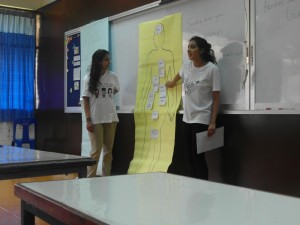All of us learn using different learning styles, so it is important as a teacher to ensure that you are incorporating these styles into your classroom practice. This way you are giving the pupils in your class the best chance of being able to understand the lesson as well as keeping them engaged and interested! There are three main types of learning styles:
 Visual learners
Visual learners
Visual learners are those students who learn things best through seeing them. They benefit from the use of pictures, diagrams and other visual aids. They often revise or remember things by drawing pictures or diagrams. This should be an easy method to use when teaching English as visual resources are usually pretty essential when teaching a foreign language!
Auditory learners
Auditory learners are students who learn best by listening; they depend on listening and speaking as a main way of learning. They need to hear what is being said in order to understand and may have difficulty with instructions that are written. They sort through the information that is sent to them, by using listening and repeating skills. To ensure that auditory learners needs are met within your lesson, you need to incorporate sections where you are repeating language, using songs or rhymes. You can use paired work, where children are repeating vocabulary to each other (you can make it more fun by doing it as role play).
Kinesthetic learners
Kinesthetic learners are students who learn by carrying out a physical activity, rather than listening to or watching a lesson. People with a kinesthetic learning style are often known as “do-ers” or tactile learners. They experience realization through ‘doing’ and cement understanding through physical task related activities. This is probably the learning style that as a teacher of a foreign language you have to think most about, as it is the one that can get overlooked or forgotten! Ways in which you can include this learning style in a lesson are action songs, e’g heads, shoulders knees and toes. The students then have an action that is associated with vocabulary. Games which involve actions and vocabulary also work. Role play where children are acting out dialogue such as ‘going shopping’ are also useful methods for kinesthetic learners to remember things. Actions that match with phonics are also useful tools to help children to learn English letter sounds.
A good lesson will cater for all different types of learners! For more information on learning styles, google VAK!



Comments are closed.